
10 december 2020


All original writing

2014, 2015, 2016,
2017, 2018, 2019,
2020, 2021, 2022,
2023, 2024
Dr Ian McLauchlin
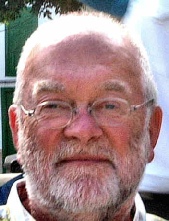

ANTONY GORMLEY -
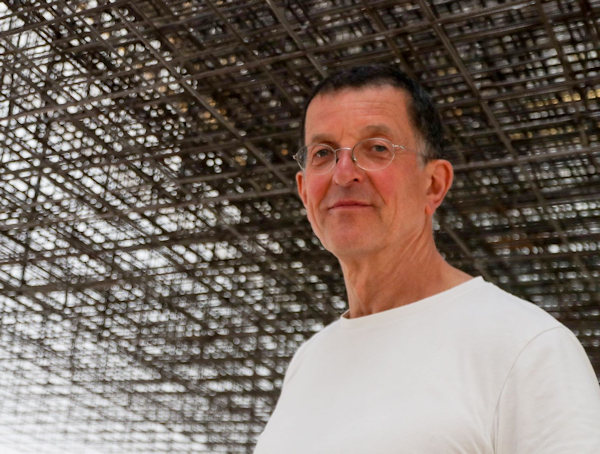
Fig. 1
You must have heard of Antony Gormley and many of his sculptures. Famous ones include the figures in the sea at Crosby Beach, near Liverpool – ‘Another Place’.
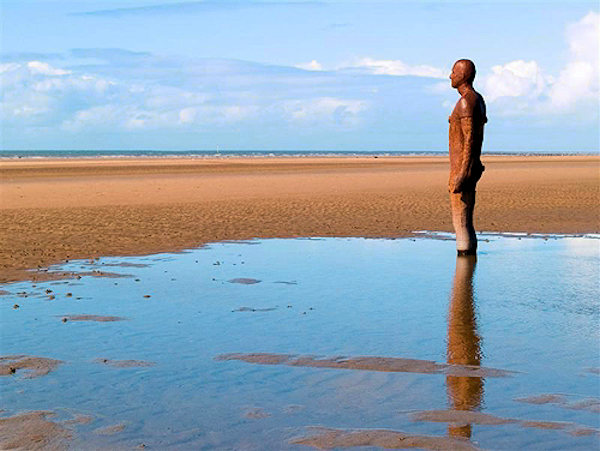
Fig. 2
Out of interest, the location is:
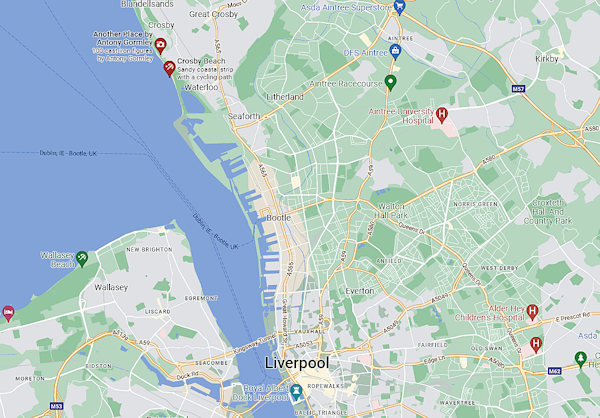
Fig. 3
Another is ‘The Angel of the North’ (AOTN) at Gateshead.
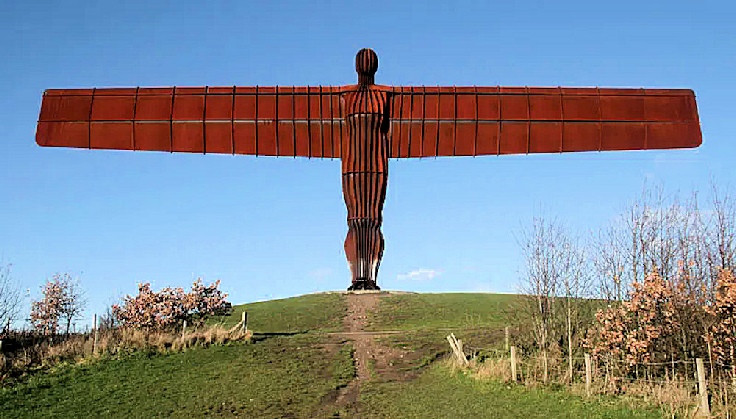
Fig. 4
Location is:
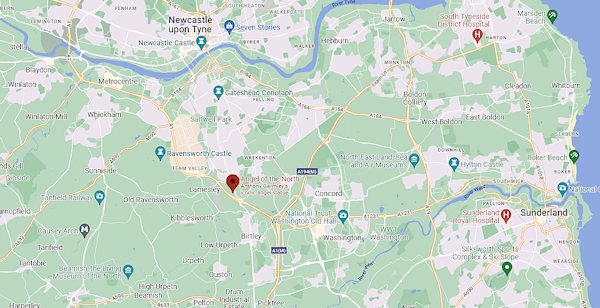
Fig. 5
When I first saw that sculpture, I was drawn to the vertical bars on the ‘arms’. In particular, their uneven spacing.
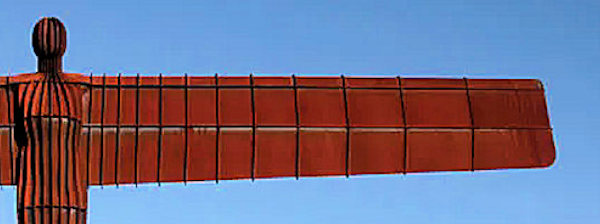
Fig. 6
That shouted out to me ‘Mathematical Series’. (I’m a scientist in case you hadn’t realised.)
So what did I do? You’ve guessed. Set about finding what particular series it was. It’s not going to be complex, is it. It’s a sculpture not a mathematical exercise!
First, what’s a mathematical series? It’s a list of numbers each related to the other. So an example:
1 2 3 4 5 6 7 8 etc.
That’s a simple series of numbers, each one made by adding 1 to the one before it.
Similarly:
5 9 13 17 21 25 etc.
That’s obtained by adding 4 to the previous number. Adding to get the next term is called an ARITHMETIC SERIES.
But the gaps in these series are all equal. If you look at the Angel of the North, Fig.6, the spacing between the vertical bars isn’t constant, it gets bigger the further away from the body you go. So we need to look at something else.
Look at the series:
1 2 4 8 16 32 64 128 etc.
This is obtained by multiplying the previous number by 2. Multiplying to get each term is called a GEOMETRIC SERIES.
You can see that the gap between each number gets bigger as you go along the series. So the AOTN arm spacings must obey a GEOMETRIC SERIES.
But what particular geometric series? I set about finding out, as you do.
I printed a photo of the arm and measured with a ruler the spacings between the bars. This is what I found:
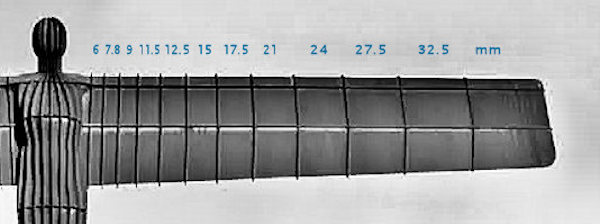
Fig. 7
I entered these into a spreadsheet, because that made it easy to do calculations.
6 7.8 9 11.5 12.5 15 17.5 21 24 27.5 32.5
It makes the next stages easier if the first figure is 1 and you can do that by dividing every measurement by 6. This doesn’t change the relationship between the measurements:

Fig. 8
To get an idea of whether these differ by the same amount, you can divide each number by the one before it:
1.30 1.15 1.28 1.09 1.20 1.17 1.20 1.14 1.15 1.18
You can see that, very approximately, each measurement is about 1.2 times the one before it. (The first value is very approximate as the errors in measuring the smallest spacings are much larger than measuring the larger spacings.)
So . . . we now know that the AOTN arm decoration spacings are:
Not random
A geometric series
Such that each spacing is about 1.2 times the previous spacing
Phew. So that’s the basics. Hope you’re with me so far. While you’re absorbing all that, here’s another Antony Gormley sculpture to give you a break. This one’s called ‘Work’ and is due to sit high above Dewsbury.
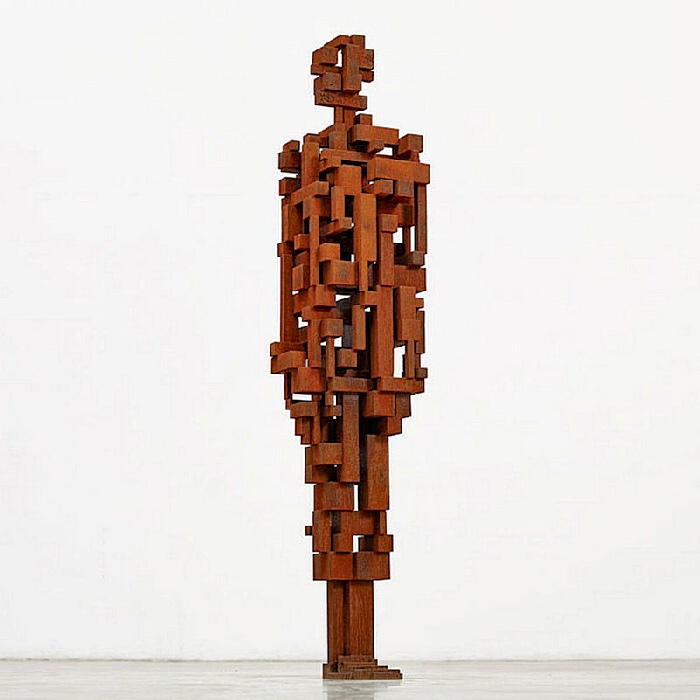
Fig. 9
Right, back to it and just to finish off. We’ve worked out that the multiplier is about 1.2 so we can now calculate a series using this information. In other words, start with 1 and multiply each term by 1.2. You then get the following series.:

Fig. 10
If you compare the numbers in Fig. 8, derived from the measurements and those in Fig. 10, the calculated series, you can see the similarity. This can be illustrated better by a graph:
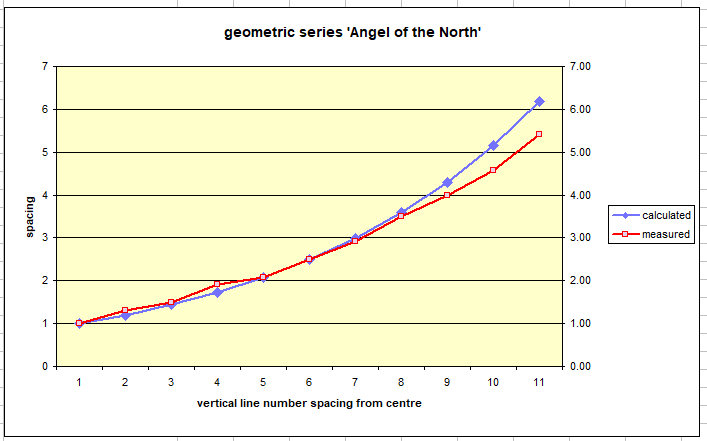
Fig. 11
You can see that the measured spacings, Fig. 8 and in red, are very well represented by the calculated ones, Fig. 10 and in blue.
You don’t need to know this but for information, and in the shorthand that mathematicians use for simplicity, the particular AOTN spacing series is
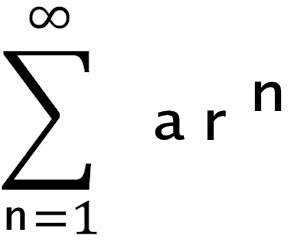
where a=1 and r=1.2. In the real world a will depend on the actual measurements.
CONCLUSION
Not many people ever thought about this. I did and found that the spacing between the arm verticals in the Angel of the North statue follows a geometric series and we’ve worked out which one! Why wouldn’t you ?
PS
If you want to know more about the construction of AOTN, have a look at this link, from the people who helped construct it:
https://www.birtleygroup.co.uk/angel-
Ian McLauchlin 6aug22
7 august 2022